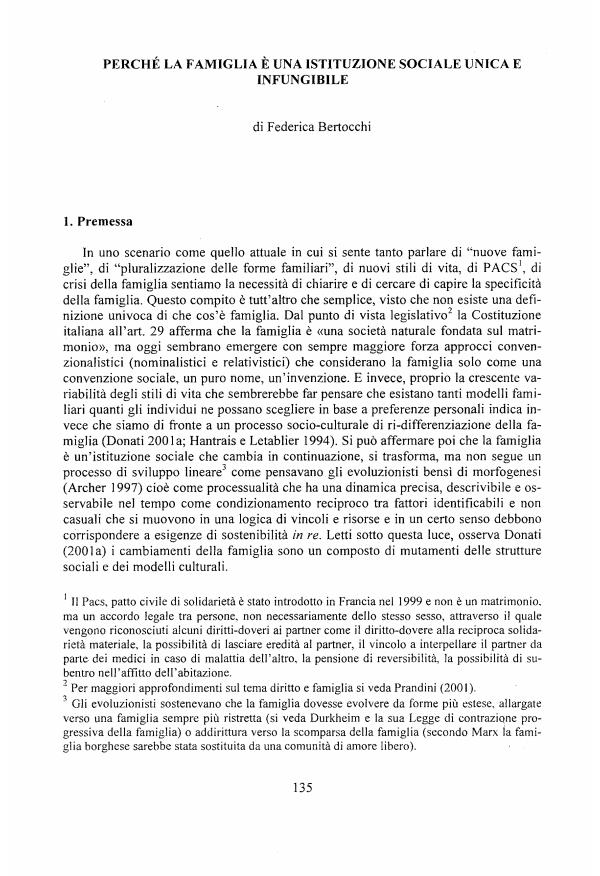Perché la famiglia è un'istituzione sociale unica e infungibile
Titolo Rivista SOCIOLOGIA E POLITICHE SOCIALI
Autori/Curatori Federica Bertocchi
Anno di pubblicazione 2006 Fascicolo 2006/1
Lingua Italiano Numero pagine 18 P. Dimensione file 112 KB
DOI
Il DOI è il codice a barre della proprietà intellettuale: per saperne di più
clicca qui
Qui sotto puoi vedere in anteprima la prima pagina di questo articolo.
Se questo articolo ti interessa, lo puoi acquistare (e scaricare in formato pdf) seguendo le facili indicazioni per acquistare il download credit. Acquista Download Credits per scaricare questo Articolo in formato PDF

FrancoAngeli è membro della Publishers International Linking Association, Inc (PILA)associazione indipendente e non profit per facilitare (attraverso i servizi tecnologici implementati da CrossRef.org) l’accesso degli studiosi ai contenuti digitali nelle pubblicazioni professionali e scientifiche
The main aim of this article is to identify the essential features of the family, ascertain its specific nature and establish the boundaries between what is considered family and what is not, above all by distinguishing the family from the other primary groups. The phenomenon of pluralization of lifestyles has brought with it a strong degree of ambivalence. On one hand it seems to operate as a dedifferentiation process among primary relationships, as it emphasizes spontaneous feelings, values, roles and relationships of pure friendship and intimacy, while on the other hand it leads to the emergence of new distinctions between primary relationships, given that they are not all alike and cannot be categorised into homogenous groups. Therefore, in order to observe the family it is indispensable first of all to identify the network of links between the different individuals living in and around a family using a relational approach which highlights that the latent identity of the family consists of being a specific social relationship, sui generis, which emerges from the combined interweaving of four linked elements or components: gift, reciprocity, generativity and sexuality. Identifying the two ties in relationships between sexes and generations which constitute a family relationship makes it possible to simplify the wide variety of family forms which are currently taking shape in the social spectrum and aspire to be recognised officially: only the presence of at least one of the two relationships implies the existence of a family.
Federica Bertocchi, Perché la famiglia è un'istituzione sociale unica e infungibile in "SOCIOLOGIA E POLITICHE SOCIALI" 1/2006, pp , DOI: